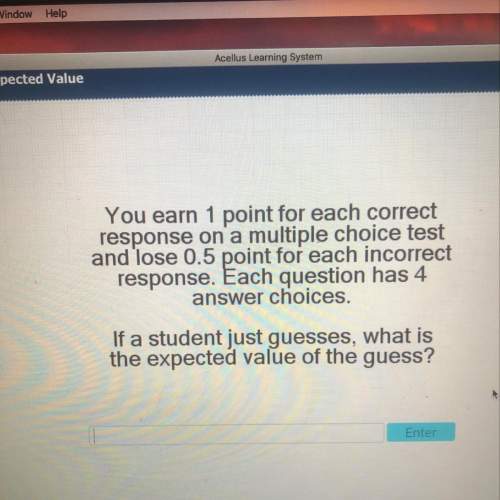
Mathematics, 26.03.2020 04:25 1341220857
An experiment yields one of five sample data points: A, B, C, D, and E. If P(A) = P(C), P(B)= .1, P(D) = .2, and P(E) = .1, what's P(C)?

Answers: 1


Other questions on the subject: Mathematics

Mathematics, 21.06.2019 14:30, caraxphernelia
Which expression is equivalent to (3^2)^-2 a.-81 b.-12 c.1/81 d.1/12
Answers: 2


Mathematics, 21.06.2019 18:00, lpssprinklezlps
George has seven boxes of five pencils. giulio three boxes of eight pencils. one of the boys arranges all his pencils equally into two groups. was this george or giulio how many are in each group explain
Answers: 1

Mathematics, 21.06.2019 22:30, jadeochoa4466
Aflagpole broke in a storm. it was originally 8 1 81 feet tall. 2 8 28 feet are still sticking straight out of the ground, where it snapped, but the remaining piece has hinged over and touches the ground some distance away. how far away is the end of the pole from the base of the pole along the ground?
Answers: 1
You know the right answer?
An experiment yields one of five sample data points: A, B, C, D, and E. If P(A) = P(C), P(B)= .1, P(...
Questions in other subjects:

Chemistry, 15.12.2020 21:40


Biology, 15.12.2020 21:40


English, 15.12.2020 21:40


Chemistry, 15.12.2020 21:40

English, 15.12.2020 21:40

Mathematics, 15.12.2020 21:40




